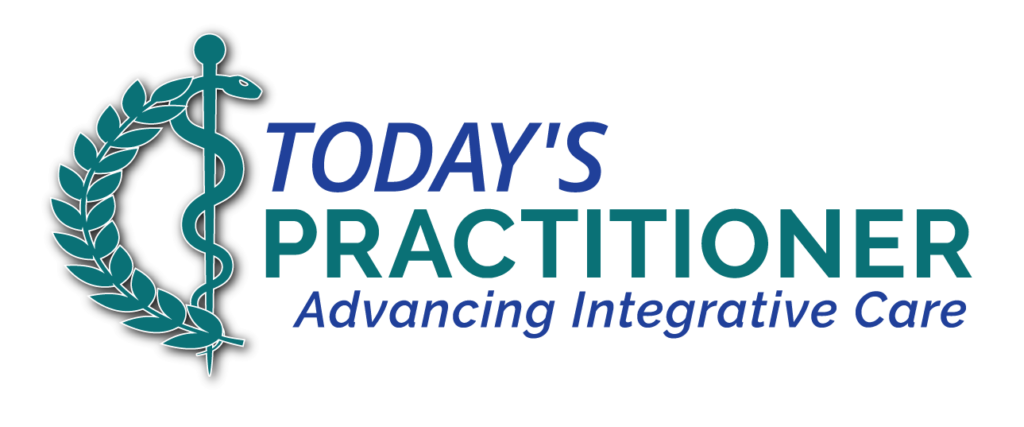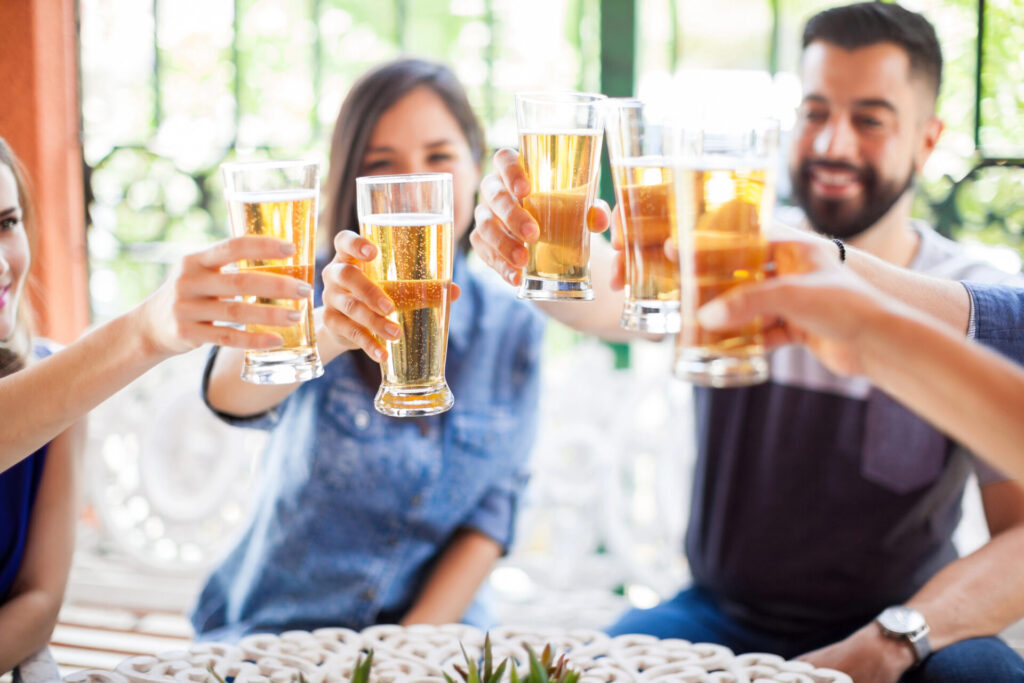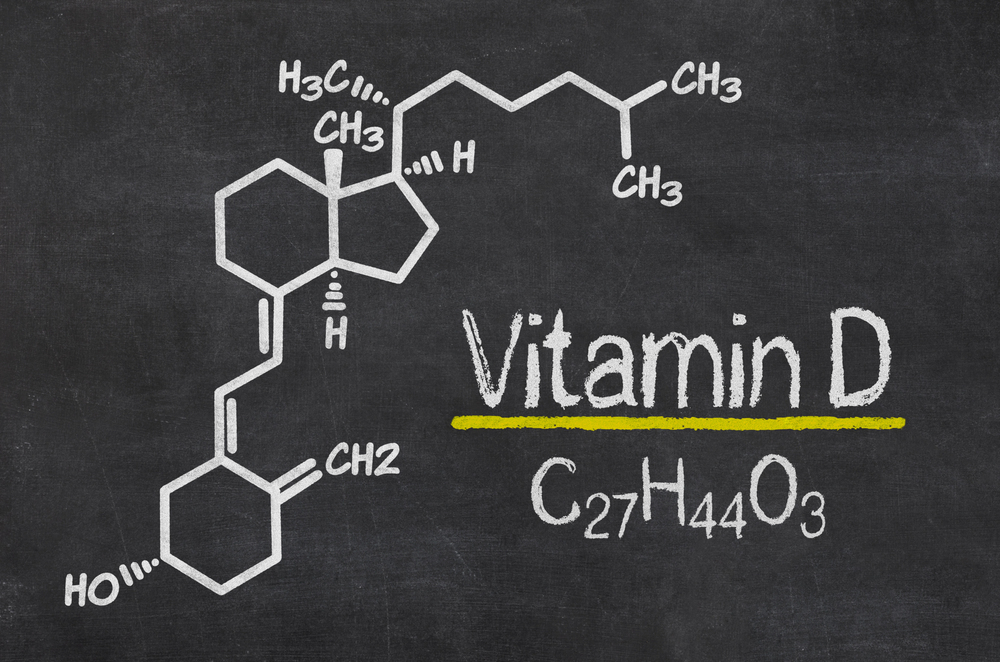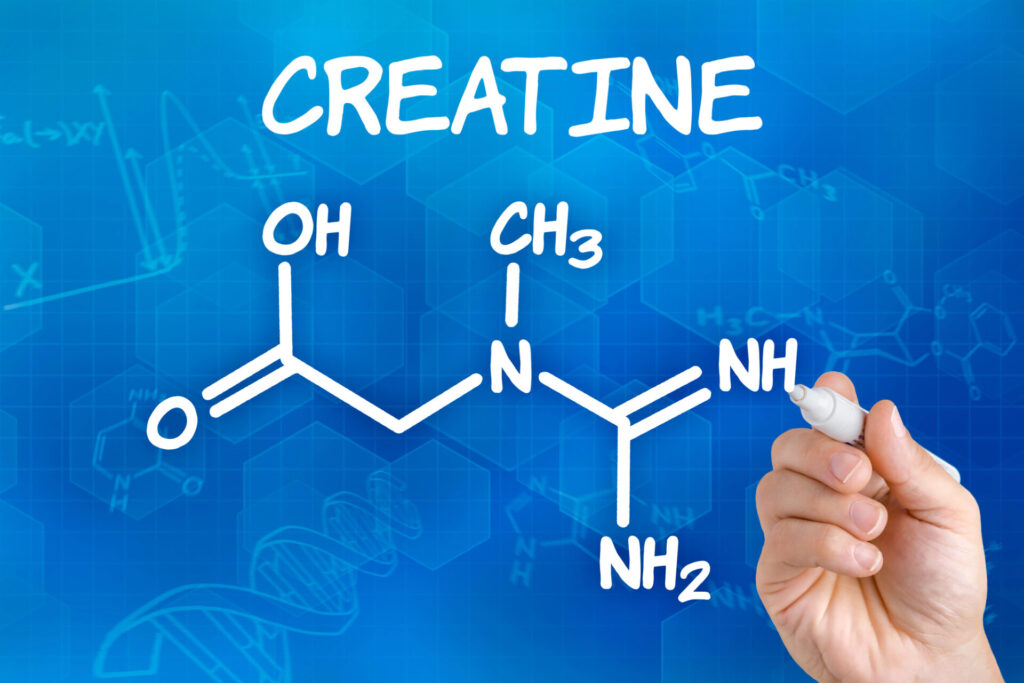As a medical education specialist at a functional medicine laboratory, I speak with clinicians daily about their patient’s stool test results. Alcohol use as a cause for abnormal results is often overlooked or is not regarded as a serious enough gut toxicant, especially in casual drinkers. But how many of your patients are imbibing? According to the NIH, in the past month, 47.5% and 21.7% of people aged 12 and older reported that they drank or engaged in binge drinking, respectively.1 Drinking is a common lifestyle factor, so, it’s important to factor in alcohol when addressing your patient’s gut health issues – for so many reasons.
The U.S. Dietary Guidelines for Americans state that moderate drinking includes 2 drinks daily for men and 1 drink for women or less.2 Is daily drinking really okay, though? Is any amount of alcohol safe? The World Health Organization informs us that, “no safe amount of alcohol consumption for cancers and health can be established.”3 When it comes to gut health, we see that any amount of alcohol can be detrimental.
The 5 R’s and Gut Health
For those who use the 5R Framework for gut health, the first step “Remove”, not only refers to food sensitivities and pathogenic organisms, but also toxins, including alcohol.
To refresh, the 5 R’s include:
- Remove: eradicate harmful microorganisms; elimination diet to remove common food allergens, sensitivities, and toxins
- Replace: enzymes, hydrochloric acid, bile salts to restore optimal digestion
- Reinoculate: pre- and probiotics to restore healthy gut flora
- Repair: nutrients and dietary strategies that strengthen the intestinal lining
- Rebalance: stress management to balance the gut-brain-adrenal axis
By using a 5R approach to gut health, you can help your patients overcome alcohol’s destructive effects that lead to gut dysfunction.
What Does Alcohol Do to the GI Tract?
Alcohol wreaks havoc on the GI tract. As a toxin and irritant, alcohol and its metabolites promote gut inflammation, oxidative stress, DNA and cell damage, and cell death.4,5
Disrupts Normal Esophageal and Stomach Physiology
Alcohol injures the mucosa in the esophagus and stomach, causing esophagitis and gastritis.6,7 Alcohol damage to the esophagus and stomach affects function including motility, lower esophageal sphincter patency, and gastric acid secretion, all factors that contribute to gastroesophageal reflux disease (GERD).8
Exocrine Pancreatic Insufficiency (EPI)
I often find myself having similar discussions with clinicians regarding their patient’s stool pancreatic elastase 1 (PE1) level. PE1 is a marker of pancreatic exocrine function. Exocrine pancreatic insufficiency (EPI) is characterized by inadequate amounts of digestive enzymes and is diagnosed when PE1 levels fall below 200 mcg/g, which I occasionally see. More often, the patient’s level is between 200-500 mcg/g, yet they experience EPI symptoms including gas, bloating, abdominal pain, or diarrhea. Pancreatic function is assumed to be normal when levels are greater than 500 mcg/g.9 The conversation usually involves reviewing the causes of suboptimal levels. As you might have guessed, alcohol is listed as one of many causes of EPI.
It is well known that heavy alcohol use is a risk factor for acute or chronic pancreatitis, which can cause EPI. Alcohol-induced EPI involves damaged and necrotic pancreatic acinar cells, which are responsible for synthesizing, processing, and secreting digestive enzymes.10 Cholecystokinin (CCK) secretion from the small intestine is responsible for gallbladder contraction and pancreatic secretion. Villous atrophy impairs CCK secretion as seen in celiac disease.11,12 Similarly, alcohol induces villous damage and may promote EPI via a similar mechanism although this theory has not been studied.13,14
The treatment for EPI is pancreatic enzyme replacement therapy (PERT), in line with the 5R “Replace” step. You might also consider giving PERT to patients with PE1 levels that are 200-500 mcg/g. In these patients, an impressive 71% showed improvement in symptoms after starting PERT, with decreased diarrhea, steatorrhea, and flatulence. Of note, other patients with PE1 levels in this range who were not offered PERT, but tried interventions for other possible conditions, remained symptomatic.9
In addition to PERT, the most important step is to identify the underlying cause for low or suboptimal PE1 levels. Often the cause is treatable, which is great news for patients, who would otherwise have to rely on digestive supplements with every meal indefinitely.
In one conversation with a clinician, we looked at her patient’s stool PE1 level which was low, indicating severe EPI. As I listed the causes of EPI to the clinician, she concluded that alcohol seemed the only likely possibility. The middle-aged male patient was drinking 4 cocktails every evening to wind down after work. About a month later I had another consult with this clinician on a repeat PE1 level which had recovered to a normal level. She reported that the patient quit drinking altogether and gut symptoms had mostly resolved. It was surprising to see that exocrine pancreatic function recovered that quickly.
A study on patients who abstained from alcohol after their first acute pancreatitis episode showed that most patients’ PE1 levels returned to normal after two years. Pancreatic damage severity may predict how long it takes to recover pancreatic function.15 Another study showed that even after alcohol cessation, pancreatic function continued to deteriorate after several years of follow-up, although not as severely as in those who continued drinking.16
Dysbiosis and SIBO
Dysbiosis is one of the most common findings I see in stool testing, and it is essential to remove alcohol and other factors disrupting microbiome homeostasis.17
Alcohol use results in a general decrease in beneficial bacteria and an increase in harmful bacteria and Candida albicans.5,14,18,19 Alcohol promotes the overgrowth of Gram-negative bacteria, especially in the small intestine by delaying GI transit.13,20,21 Small intestinal bacterial overgrowth (SIBO) contributes to functional and morphological abnormalities and leads to non-specific gastrointestinal symptoms in alcoholics.5,22
Lipopolysaccharides (LPS) are outer membrane components of Gram-negative bacteria that act as endotoxins to multiple cells and organs in the human body.23 Multiple microorganisms can produce endotoxins and exotoxins that escape the gut through a hyperpermeable intestine inducing an immune response and inflammation.14,19,24
Bacteria produce important metabolites such as short-chain fatty acids like butyrate, neurotransmitters, secondary bile acids, and vitamins, which can be altered with alcohol-induced dysbiosis.25 These metabolites influence immune and inflammatory pathways contributing to gut barrier function. Butyrate is reduced in stool samples from alcoholics and plays a role in reducing inflammation and promoting intestinal integrity through tight junctions.5,14
The “Remove” step of the 5Rs involves using antimicrobials to eradicate pathogens, potential pathogens, or bacterial overgrowth seen with stool or SIBO breath testing. Interestingly, the antibiotic Rifaximin prescribed in cases of alcohol-related cirrhosis for hepatic encephalopathy prevention is also the popular antibiotic of choice for treating SIBO.14,26 These conditions may share a similar pathogenesis or microbiome signature. Additionally, many clinicians use formulas containing IgG immunoglobulin to bind pathogenic microbes and microbially produced toxins in the gut. This prevents immune system activation, maintains beneficial gut microbiota, and improves gut barrier function.27
The “Reinoculate” step of the 5Rs provides pre- and probiotics to correct dysbiosis and help the microbiome recover after antimicrobial treatment. Fermented foods, prebiotic foods, diverse fibers, and supplements can help repopulate the gut with healthy species. Lactobacillus and Bifidobacteria species have been shown to limit Gram-negative bacterial growth and decrease gastrointestinal inflammation, making probiotics a possible treatment option for alcohol-induced dysbiosis.5,13,28 Antibiotics and Lactobacillus GG reduced plasma endotoxin levels and subsequent liver injury in rats.13 Short-term supplementation with Bifidobacterium bifidum and Lactobacillus plantarum lowered serum liver enzymes in male patients with alcoholic hepatitis.18 Treatment with the probiotic VSL#3 decreased circulating cytokines and oxidative stress in patients with alcoholic liver disease.29
Mucosal Damage Causing Intestinal Permeability
Alcohol is metabolized to acetaldehyde through mucosal, bacterial, or fungal alcohol dehydrogenase enzymes.5,30 Acetaldehyde and nitric oxide formation are thought to promote the mucosal damage associated with alcohol ingestion. Impaired intestinal barrier function involves small intestinal epithelial damage with villous blunting, damage to the lamina propria layer resulting in hemorrhagic lesions, and loss of tight junctions between cells leading to increased permeability.5,13,24,31 Both alcohol consumption and gut dysbiosis are necessary to induce gut permeability.24 Inflamed villi inhibit nutrient absorption leading to nutrient deficiencies especially seen in heavy drinkers.31
There is an interplay between gut microbiome imbalance and intestinal permeability. Both chronic and acute alcohol use results in increased intestinal permeability as evidenced by increased serum bacterial endotoxin levels. Microbiome balance and gut membrane integrity are key to preventing bacterial translocation across the membrane.5,23,24
The “Repair” step of the 5R approach is important for healing alcohol-induced mucosal injury. L-glutamine, oats, zinc, and probiotics were studied in in-vitro and animal models to preserve intestinal integrity in the setting of increased alcohol consumption.13
Hepatic Injury and Steatosis
There are many downstream consequences of an intestinal barrier breach. Endotoxin from gut microbes enters the portal vein and general circulation triggering alcoholic liver disease and other distal alcohol-associated organ injuries including pancreatitis, acute respiratory distress syndrome (ARDS), and brain injury.5,13 LPS binds to hepatic stellate cell and Kupffer cell receptors leading to damage from free radicals, nuclear factor kappaB (NFkB), cytokines, chemokines, and adhesion molecules. These mediators initiate inflammatory and fibrotic liver changes.13 Gut microbiome modulation has a therapeutic benefit on alcohol-induced liver disease as previously discussed.
Alcoholism Versus the Casual Drinker – Is Any Amount of Alcohol Safe?
It’s obvious that the volume of alcohol in alcohol use disorders is destructive. But what about your casual drinker? Is the gut resilient enough to handle small, occasional doses?
Ethanol and its metabolite acetaldehyde are classified as carcinogens even with moderate drinking—the amount considered “safe”.32 GI tract cancer risk is increased including oral, esophageal, liver, and colorectal cancer.33
Even one episode of excessive consumption (binge drinking) results in duodenal erosions and bleeding, and mucosal injury in the upper jejunum.22 One binge drinking episode in healthy individuals results in increased serum endotoxin levels and inflammatory cytokines, suggesting increased intestinal permeability and bacterial translocation across the gut membrane. These effects are stronger in women compared to men. Serum endotoxin levels returned to baseline 24 hours after alcohol intake.23 Mouse models show that colonic injury and inflammation persist beyond the drinking period.34 Intestinal epithelial cells are renewed every 48-72 hours and in healthy individuals, alcohol’s effects are transient. However, in alcoholics with liver disease, there is a delay in cell renewal and the impaired barrier persists much longer, even weeks.21
Certain populations, like those with metabolic-associated fatty liver disease (MAFLD), may be even more susceptible to alcohol’s toxic effects. A study found that even with low to moderate alcohol intake, patients with MAFLD have a microbiome similar to those with alcohol use disorder, compared to controls or MAFLD patients abstaining from alcohol. This suggests that small amounts of alcohol can have a large impact in this population.35
There is evidence that red wine has health benefits associated with polyphenols. It’s even associated with increases in beneficial bacterial species like Bifidobacterium in the gut. One study showed that de-alcoholized red wine had similar benefits, so you can encourage a polyphenol-rich diet, minus the alcohol.36 The majority of studies looking at alcohol’s effect on the gut show more harm than benefit.
Gut-Brain-Adrenal Axis – A Vicious Cycle
Rebalancing the gut-brain-adrenal axis is arguably one of the most important steps of the 5R protocol. Alcohol is often used as a coping strategy to relieve stress and anxiety. Sadly, alcohol creates a vicious cycle where intestinal permeability and LPS influence psychological and cognitive function, leading to depression, anxiety, and alcohol cravings.4,24
The vagus nerve is the main communication superhighway between the gut microbiome, the brain, and the adrenals via neuroendocrine, immune, inflammatory, and metabolic mechanisms.5,25 The vagus nerve is disrupted with chronic alcohol use and reduced vagal tone promotes hypothalamic-pituitary-adrenal (HPA) axis upregulation and increased alcoholic behavior.24,37,38 Breaking the cycle with healthy coping replacements or therapies that increase vagal tone and correct HPA axis dysfunction may help. Breathwork, exercise, adrenal support, and heart rate variability (HRV) biofeedback such as HeartMath are useful considerations.39-44
Alcohol – The Root Cause of Your Patient’s Gut Health Issues?
When screening patients, have them quantify their alcohol use – many consider regular social drinking acceptable or might be in denial about drinking too much. Stool testing is an incredibly helpful tool to determine hidden root causes but may not be necessary if you remove known obstacles to cure first.
After reviewing an abnormal stool test with a clinician one day, she mentioned already “doing everything” with her patient to improve gut health to no avail. The one factor that kept getting ignored was alcohol. The patient enjoyed partying, and it was wedding season. Sometimes gut health programs may not be enough to overcome the destructive effects of continued alcohol consumption.
If your IBS and gut health patients drink alcohol, remember the 5 R’s – Remove (alcohol), Replace (digestive enzymes), Reinoculate (prebiotics, probiotics), Repair (alcohol-induced leaky gut), and Rebalance (stress management, healthy coping replacements).
Author:

Dr. Christine Krall received her Doctorate of Naturopathic Medicine from Bastyr University in Kenmore, WA. She completed a 3-year Family Practice & Oncology Residency at Yellowstone Naturopathic Clinic and Frontier Cancer Center in Billings, MT. Dr. Krall spent over a decade providing test interpretation and educational support to practitioners at Genova Diagnostics, a functional medicine laboratory in Asheville, NC. Dr. Krall continues to use her 20 years of writing experience to communicate the benefits of natural medicine.
References:
- NIH. Alcohol Use in the United States: Age Groups and Demographic Characteristics. Alcohol’s Effects on Health 2024; https://www.niaaa.nih.gov/alcohols-effects-health/alcohol-topics/alcohol-facts-and-statistics/alcohol-use-united-states-age-groups-and-demographic-characteristics.
- NIH. Understanding Alcohol Drinking Patterns. Alcohol’s Effects on Health 2025; https://www.niaaa.nih.gov/alcohols-effects-health/alcohol-drinking-patterns.
- Anderson BO, Berdzuli N, Ilbawi A, et al. Health and cancer risks associated with low levels of alcohol consumption. The Lancet Public health. 2023;8(1):e6-e7.
- Bishehsari F, Magno E, Swanson G, et al. Alcohol and Gut-Derived Inflammation. Alcohol research : current reviews. 2017;38(2):163-171.
- Chen G, Shi F, Yin W, et al. Gut microbiota dysbiosis: The potential mechanisms by which alcohol disrupts gut and brain functions. Frontiers in microbiology. 2022;13:916765.
- Frieri G, Galletti B, Serva D, Viscido A. The Role on Endoscopy in Alcohol-Related Diseases. Reviews on recent clinical trials. 2016;11(3):196-200.
- Roberts DM. Chronic gastritis, alcohol, and non-ulcer dyspepsia. Gut. 1972;13(10):768-774.
- Chen SH, Wang JW, Li YM. Is alcohol consumption associated with gastroesophageal reflux disease? Journal of Zhejiang University Science B. 2010;11(6):423-428.
- Mathew A, Fernandes D, Andreyev HJN. What is the significance of a faecal elastase-1 level between 200 and 500μg/g? Frontline gastroenterology. 2023;14(5):371-376.
- Rasineni K, Srinivasan MP, Balamurugan AN, et al. Recent Advances in Understanding the Complexity of Alcohol-Induced Pancreatic Dysfunction and Pancreatitis Development. Biomolecules. 2020;10(5).
- Struyvenberg MR, Martin CR, Freedman SD. Practical guide to exocrine pancreatic insufficiency – Breaking the myths. BMC medicine. 2017;15(1):29.
- Kunovský L, Dítě P, Jabandžiev P, et al. Causes of Exocrine Pancreatic Insufficiency Other Than Chronic Pancreatitis. Journal of clinical medicine. 2021;10(24).
- Purohit V, Bode JC, Bode C, et al. Alcohol, intestinal bacterial growth, intestinal permeability to endotoxin, and medical consequences: summary of a symposium. Alcohol (Fayetteville, NY). 2008;42(5):349-361.
- Meroni M, Longo M, Dongiovanni P. Alcohol or Gut Microbiota: Who Is the Guilty? International journal of molecular sciences. 2019;20(18).
- Nikkola J, Räty S, Laukkarinen J, et al. Abstinence after first acute alcohol-associated pancreatitis protects against recurrent pancreatitis and minimizes the risk of pancreatic dysfunction. Alcohol and alcoholism (Oxford, Oxfordshire). 2013;48(4):483-486.
- Gullo L, Barbara L, Labò G. Effect of cessation of alcohol use on the course of pancreatic dysfunction in alcoholic pancreatitis. Gastroenterology. 1988;95(4):1063-1068.
- Goepp J, Fowler E, McBride T, Landis D. Frequency of abnormal fecal biomarkers in irritable bowel syndrome. Global advances in health and medicine : improving healthcare outcomes worldwide. 2014;3(3):9-15.
- Kirpich IA, Solovieva NV, Leikhter SN, et al. Probiotics restore bowel flora and improve liver enzymes in human alcohol-induced liver injury: a pilot study. Alcohol (Fayetteville, NY). 2008;42(8):675-682.
- Chu H, Duan Y, Lang S, et al. The Candida albicans exotoxin candidalysin promotes alcohol-associated liver disease. Journal of hepatology. 2020;72(3):391-400.
- Bode JC, Bode C, Heidelbach R, Dürr HK, Martini GA. Jejunal microflora in patients with chronic alcohol abuse. Hepatogastroenterology. 1984;31(1):30-34.
- Rao R. Endotoxemia and gut barrier dysfunction in alcoholic liver disease. Hepatology (Baltimore, Md). 2009;50(2):638-644.
- Bode C, Bode JC. Effect of alcohol consumption on the gut. Best practice & research Clinical gastroenterology. 2003;17(4):575-592.
- Bala S, Marcos M, Gattu A, Catalano D, Szabo G. Acute binge drinking increases serum endotoxin and bacterial DNA levels in healthy individuals. PloS one. 2014;9(5):e96864.
- Leclercq S, de Timary P, Delzenne NM, Stärkel P. The link between inflammation, bugs, the intestine and the brain in alcohol dependence. Translational psychiatry. 2017;7(2):e1048.
- Qamar N, Castano D, Patt C, Chu T, Cottrell J, Chang SL. Meta-analysis of alcohol induced gut dysbiosis and the resulting behavioral impact. Behavioural brain research. 2019;376:112196.
- Wang J, Zhang L, Hou X. Efficacy of rifaximin in treating with small intestine bacterial overgrowth: a systematic review and meta-analysis. Expert review of gastroenterology & hepatology. 2021;15(12):1385-1399.
- Petschow BW, Burnett B, Shaw AL, Weaver EM, Klein GL. Serum-derived bovine immunoglobulin/protein isolate: postulated mechanism of action for management of enteropathy. Clinical and experimental gastroenterology. 2014;7:181-190.
- Irwin C, Khalesi S, Cox AJ, et al. Effect of 8-weeks prebiotics/probiotics supplementation on alcohol metabolism and blood biomarkers of healthy adults: a pilot study. European journal of nutrition. 2018;57(4):1523-1534.
- Loguercio C, Federico A, Tuccillo C, et al. Beneficial effects of a probiotic VSL#3 on parameters of liver dysfunction in chronic liver diseases. Journal of clinical gastroenterology. 2005;39(6):540-543.
- Reddy MGS, Kakodkar P, Nayanar G. Capacity of Candida species to produce acetaldehyde at various concentrations of alcohol. Journal of oral and maxillofacial pathology : JOMFP. 2022;26(2):161-165.
- Butts M, Sundaram VL, Murughiyan U, Borthakur A, Singh S. The Influence of Alcohol Consumption on Intestinal Nutrient Absorption: A Comprehensive Review. Nutrients. 2023;15(7).
- Pflaum T, Hausler T, Baumung C, et al. Carcinogenic compounds in alcoholic beverages: an update. Arch Toxicol. 2016;90(10):2349-2367.
- NIH. Alcohol’s Effects on the Body. Alcohol’s Effects on Health https://www.niaaa.nih.gov/alcohols-effects-health/alcohols-effects-body.
- Fonseca-Pereira D, Bae S, Michaud M, Glickman JN, Garrett WS. Chronic binge drinking-induced susceptibility to colonic inflammation is microbiome-dependent. Gut Microbes. 2024;16(1):2392874.
- Hsu CL, Lang S, Demir M, Fouts DE, Stärkel P, Schnabl B. Any alcohol use in NAFLD patients is associated with significant changes to the intestinal virome. Hepatology (Baltimore, Md). 2023;77(6):2073-2083.
- Queipo-Ortuño MI, Boto-Ordóñez M, Murri M, et al. Influence of red wine polyphenols and ethanol on the gut microbiota ecology and biochemical biomarkers. The American journal of clinical nutrition. 2012;95(6):1323-1334.
- Keller BN, Snyder AE, Coker CR, et al. Vagus nerve damage increases alcohol intake and preference in a nonpreferring rat line: Relationship to vagal regulation of the hypothalamic-pituitary-adrenal axis. Alcohol, clinical & experimental research. 2024;48(3):488-498.
- Cheng YC, Huang YC, Huang WL. Heart rate variability as a potential biomarker for alcohol use disorders: A systematic review and meta-analysis. Drug and alcohol dependence. 2019;204:107502.
- Penzlin AI, Siepmann T, Illigens BM, Weidner K, Siepmann M. Heart rate variability biofeedback in patients with alcohol dependence: a randomized controlled study. Neuropsychiatric disease and treatment. 2015;11:2619-2627.
- Eddie D, Kim C, Lehrer P, Deneke E, Bates ME. A pilot study of brief heart rate variability biofeedback to reduce craving in young adult men receiving inpatient treatment for substance use disorders. Applied psychophysiology and biofeedback. 2014;39(3-4):181-192.
- Georgakouli K, Manthou E, Georgoulias P, et al. Exercise training reduces alcohol consumption but does not affect HPA-axis activity in heavy drinkers. Physiology & behavior. 2017;179:276-283.
- Yadav P, Chatterjee K, Prakash J, Salhotra N, Chauhan VS, Srivastava K. Impact of breathing and relaxation training (Sudarshan Kriya) on cases of alcohol dependence syndrome. Industrial psychiatry journal. 2021;30(2):341-345.
- Pandit S, Srivastav AK, Sur TK, Chaudhuri S, Wang Y, Biswas TK. Effects of Withania somnifera Extract in Chronically Stressed Adults: A Randomized Controlled Trial. Nutrients. 2024;16(9).
- Bansal P, Banerjee S. Effect of Withinia Somnifera and Shilajit on Alcohol Addiction in Mice. Pharmacognosy magazine. 2016;12(Suppl 2):S121-128.





